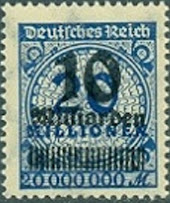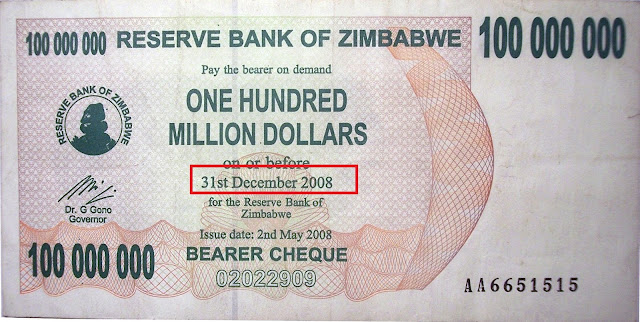In Israel in the 1980s we had a joke when going to fill up our cars: "I am not late for the fuel rise, I am early for the next". In Zimbabwe the joke was that the supermarkets were stocked with toilet paper (maybe ready for Corona) because it was cheaper to clean with $1 bills. (Too much information?). The Zimbabwean dollar notes even had expiry dates printed on them.
But here we are talking about history and we will go back in time to the roaring twenties, the 1920s that is, and to be more specific, 1923 and Germany.
Before World War I Germany was a prosperous country, with a gold-backed currency and world leadership in optics, chemicals, and machinery. The German Mark, the British shilling, the French franc, and the Italian lira were all more or less equal in value and valued at four or five to the dollar.
World War I broke out, lasting 4 long years and Germany lost the war. Under the Treaty of Versailles she was not only forced to accept all guilt for the war, but also forced to make huge reparations payments. The 1921 London Schedule of Payments required Germany to pay 132 billion gold marks in reparations to cover civilian damage caused during the war.
In 1922 Germany defaulted on its second scheduled reparations payment. The first reparations payment had apparently taken all she had. Of course the French didn't believe her and in response, together with Belgium, sent troops into Germany’s main industrial area, the Ruhr Valley. Their aim was to confiscate industrial goods as reparations payments. They occupied coal mines, railways, steel works and factories, of course everything that was important to Germany’s economy.
The German government ordered workers to follow a policy of ‘passive resistance’ by refusing to work or co-operate with the foreign troops and in return the government continued to pay their wages. People were getting paid for doing no work and there was no income from sales because the workers were on strike and the creeping inflation got out of hand. OK, some people say that the writing was on the wall. In 1914 Germany had abandoned the gold backing of its currency. They expected the war to be short, so they financed the war effort by government borrowing, not by savings and taxation.
In early 1923 German workers began a general strike, protesting the occupation of the Ruhr by foreign troops. The Weimar government chose to subsidize this strike, which aided to the collapse of Germany’s economy. As an example a dozen eggs cost a half-Reichsmark in 1918 and three Reichsmarks in 1921. In 1923, the market price increased to 500 (January) then 30 million (September) and four billion Reichsmarks (October). Did wages increase accordingly? My wages never increased during our inflation (or today for that matter) and I just saw my bank account getting smaller.
Because we are talking about stamps here and 100 years ago letters were the main way of communication, we can see what happened just by looking at the amount people had to pay for sending letters. By August 1923, with the value of the German Mark fluctuating from day to day, designing and printing new postage stamps was out of the question. So they simply used overprints on existing stamps.
 |
 |
 |
 |
 |
As an example, to send a simple letter locally in 1923 the cost was (check out November, multiple increases in the same month:
- 01 March → 40 Marks
- 01 August → 400 Marks
- 24 August → 8,000 Marks
- 01 October → 800,000 Marks
- 10 October → 2,000,000 Marks
- 20 October → 4,000,000 Marks
- 01 November → 40,000,000 Marks
- 05 November → 500,000,000 Marks
- 12 November → 5,000,000,000 Marks (5 billion or 5 milliard)
- 20 November → 10,000,000,000 Marks
- 26 November → 40,000,000,000 Marks









Very nice story... I checked for years if I could find a cover with a very high value DM and on top of it if it was a prime number. On the tabs of those sheets you have an even higher number.
ReplyDeleteI looked for an item with many stamps
DeleteThere are a lot... but finding one with a high value and at the same type a prime number isn't possible because in almost every case it ends with a 0 and it must end with 1, 3, 7 or 9. All other values can't be a prime number.
Deleteif you come across a nice one for me, let me know. For now, this one is cool
Deleteso very interesting thanks for the article ! from Les Glassman
ReplyDeleteGreat post! Thanks a lot (:
ReplyDelete